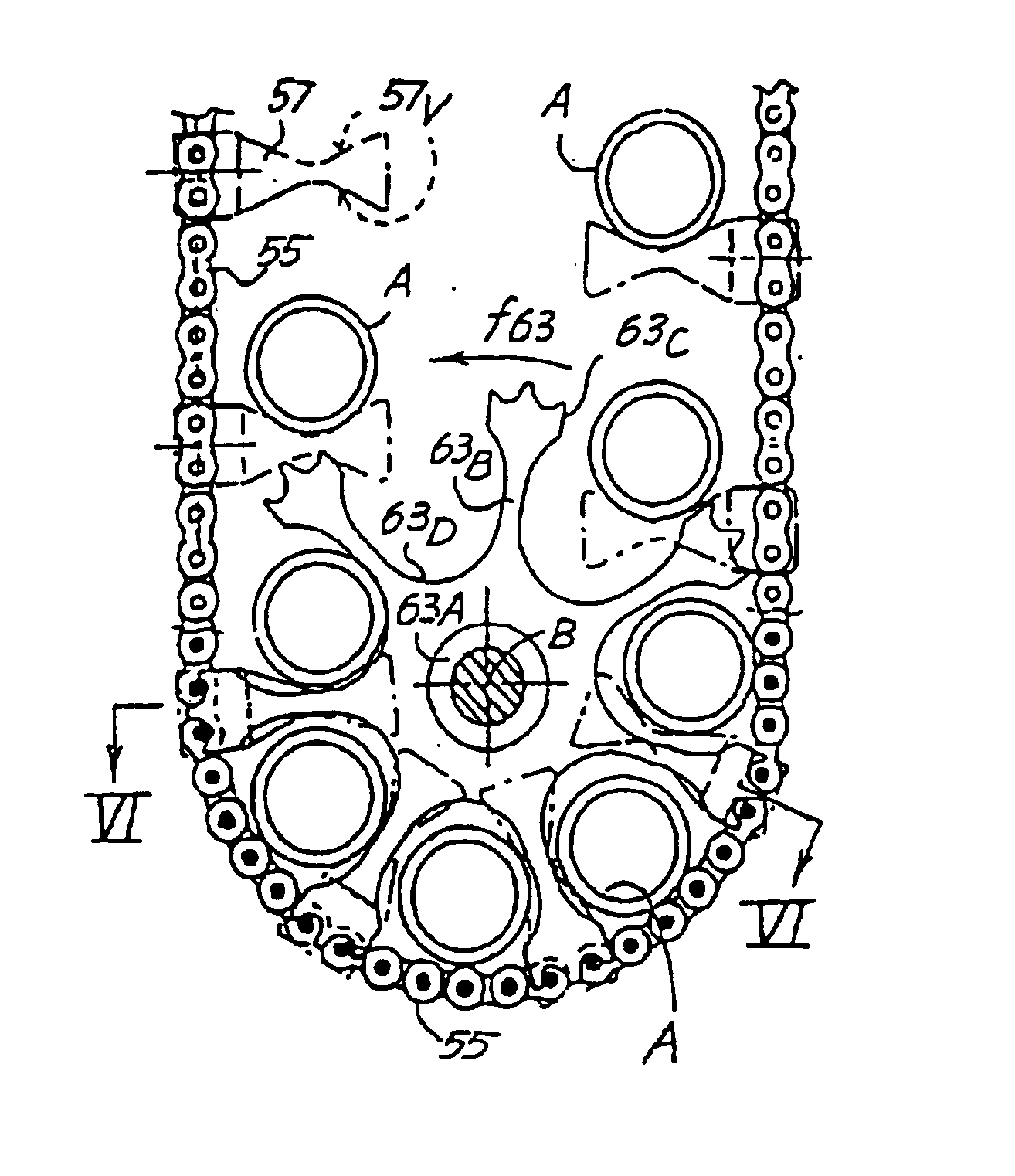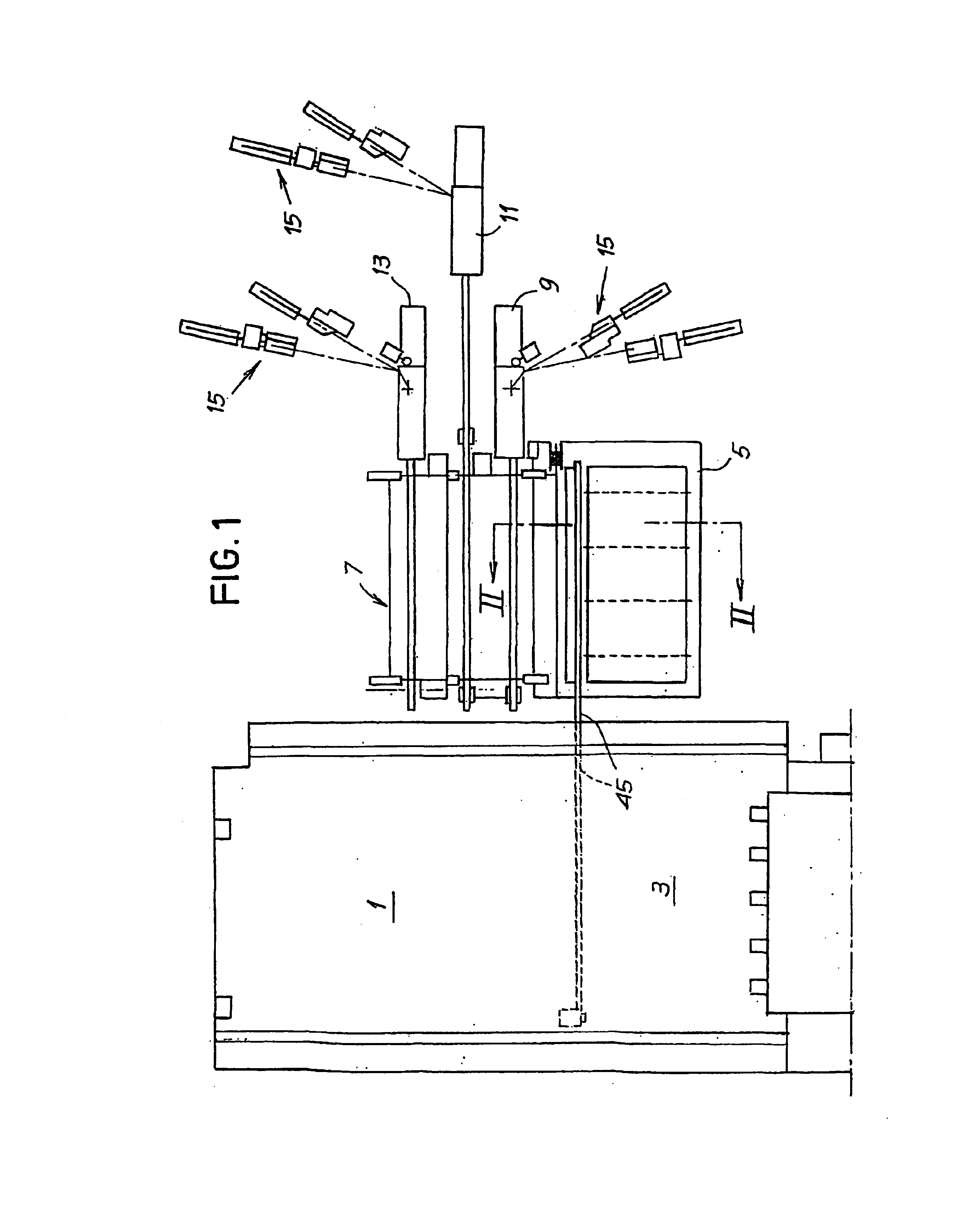Accumulator for elongated products, such as tubes and the like
a technology of accumulators and products, applied in the field of accumulators or storage units, can solve the problems of affecting the efficiency of rewinding machines, and affecting the efficiency of rewinding machines, and achieve the effect of moderate flexural resistan
- Summary
- Abstract
- Description
- Claims
- Application Information
AI Technical Summary
Benefits of technology
Problems solved by technology
Method used
Image
Examples
Embodiment Construction
FIG. 1 very roughly outlines a layout of a paper converting system for the production of rolls or logs of weblike material. Reference numeral 1 generally indicates the area where the unwinders of the parent rolls, which supply the weblike material, are arranged. Reference numeral 3 indicates the area where the rewinder is located. Other stations (not shown) are arranged downstream to the rewinder, typically one or more glue application machines, a roll accumulator, one or more saw machines and packaging machines.
An accumulator for winding cores, generally indicated with reference numeral 5, which will be described in detail below, is arranged by the side of the area 1, 3 occupied by the unwinders and the rewinder. Reference numeral 7 indicates the outline of a conveyor which supplies the cores to the accumulator 5. The cores are made (in the example shown) by three tube making machines 9, 11, 13, supplied by rolls of ribbons of cardboard 15. It is clear that a different number of tu...
PUM
 Login to View More
Login to View More Abstract
Description
Claims
Application Information
 Login to View More
Login to View More - R&D
- Intellectual Property
- Life Sciences
- Materials
- Tech Scout
- Unparalleled Data Quality
- Higher Quality Content
- 60% Fewer Hallucinations
Browse by: Latest US Patents, China's latest patents, Technical Efficacy Thesaurus, Application Domain, Technology Topic, Popular Technical Reports.
© 2025 PatSnap. All rights reserved.Legal|Privacy policy|Modern Slavery Act Transparency Statement|Sitemap|About US| Contact US: help@patsnap.com



